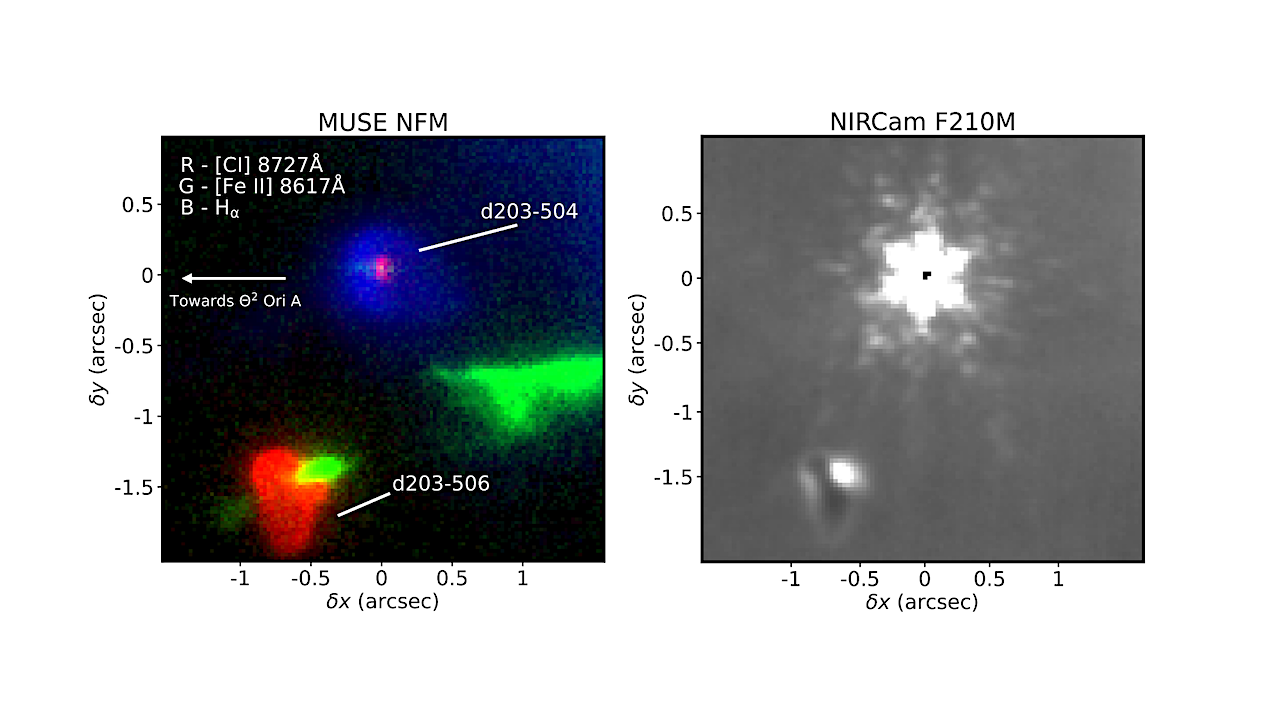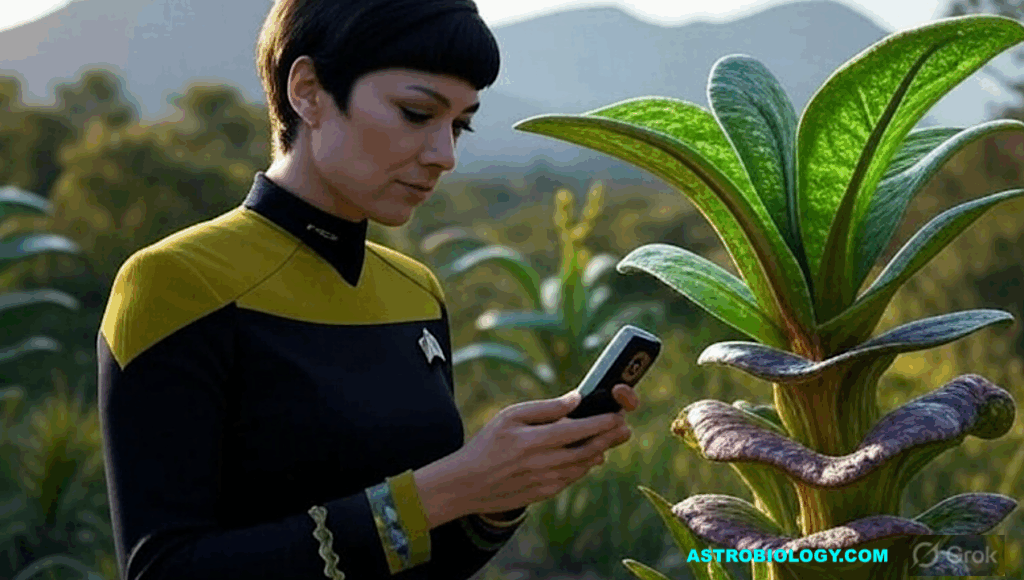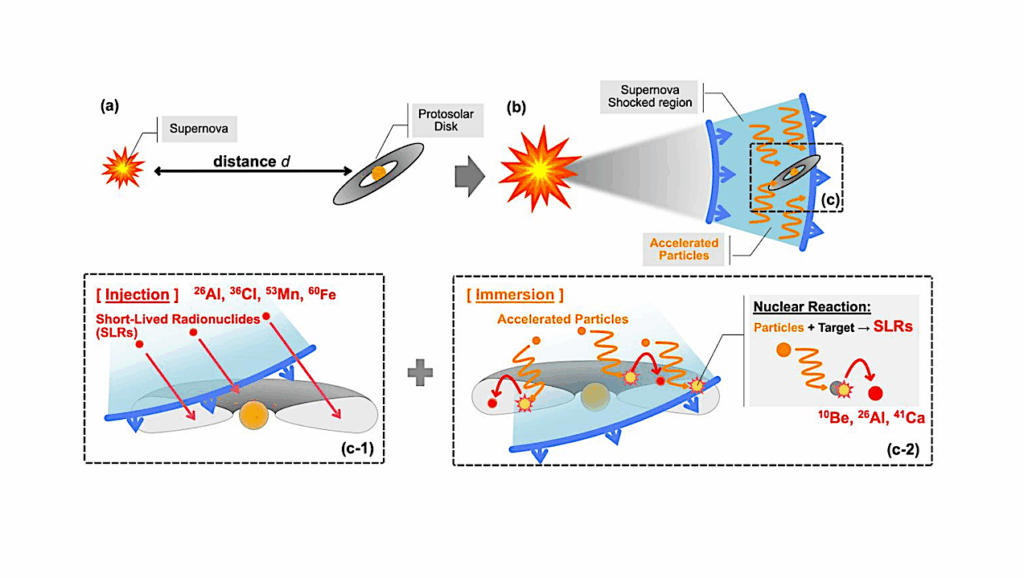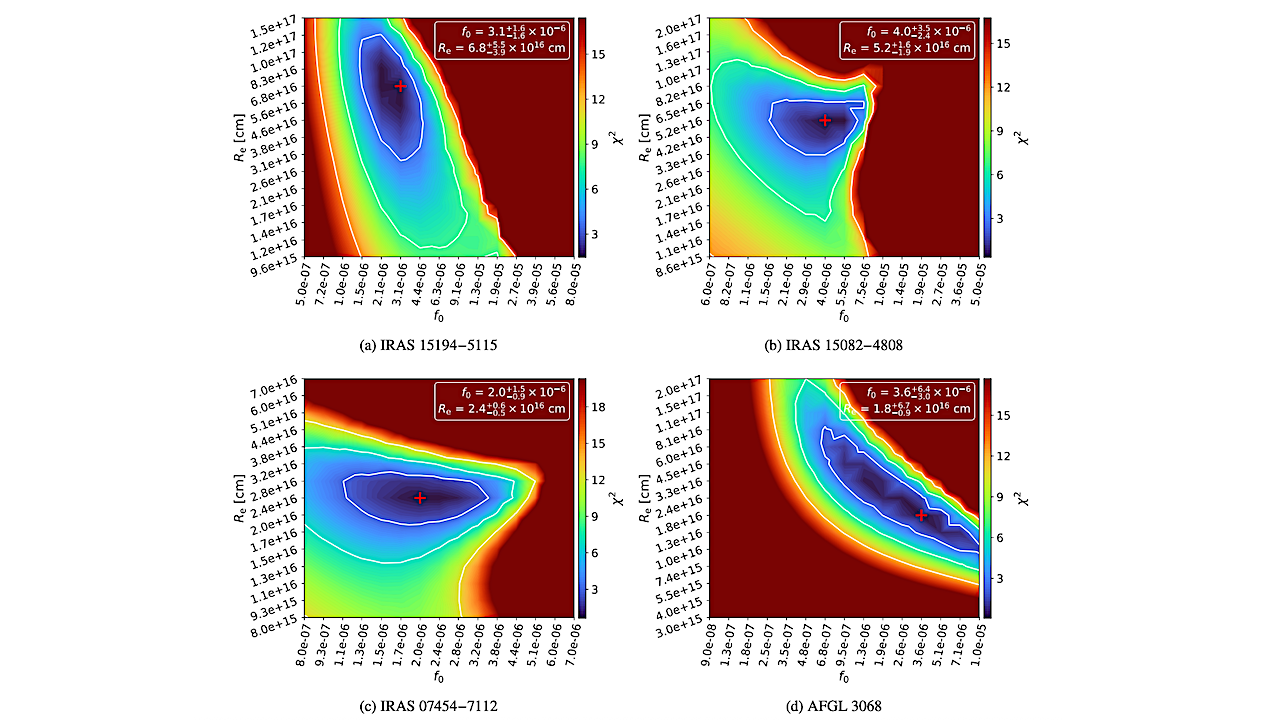Now Reading: Solar C/O Ratio In Planet-forming Gas at 1 au In A Highly Irradiated Disk
-
01
Solar C/O Ratio In Planet-forming Gas at 1 au In A Highly Irradiated Disk
Solar C/O Ratio In Planet-forming Gas at 1 au In A Highly Irradiated Disk


MUSE and NIRCam images of d203-504 environment. Left: MUSE NFM composite image of both d203-506 (bottom left) and d203-504 (top). Red: the [C i](λ8727˚A) map showing disk contributions from both d203-506 and d203-504 objects. Green: the [Fe ii] (λ8617˚A) map corresponding to jets from both objects. Blue: the Hα emission map showing the ionization fronts (only d203-504 appears to have one). The glow on the top right corresponds to the Orion Bar ionization front. Right: JWST NIRCam image of the same system from the F210M filter. — astro-ph.GA
The chemical composition of exoplanets is thought to be influenced by the composition of the disks in which they form. JWST observations have unveiled a variety of species in numerous nearby disks, showing significant variations in the C/O abundance ratio.
However, little is known about the composition and C/O ratio of disks around young stars in clusters exposed to strong ultraviolet (UV) radiation from nearby massive stars, which are representative of the environments where most planetary systems form, including ours. We present JWST spectroscopy of d203-504, a young 0.7 M⊙ star in the Orion Nebula with a 30 au disk irradiated by nearby massive stars.
These observations reveal spectroscopic signatures of CO, H2O, CH+3, and PAHs. Water and CO are detected in absorption in the inner disk (r≲1 au), where the estimated gas-phase C/O ratio is 0.48, consistent with the Solar value and that of the Orion Nebula. In contrast, CH3+ and PAHs are found in the extended surface layers of the disk. These results suggest that gas in the inner disk is chemically shielded from UV radiation while the surface layers of the disk experience UV-induced chemistry, potentially depleting their carbon content.
Ilane Schroetter, Olivier Berné, Emeric Bron, Felipe Alarcon, Paul Amiot, Edwin A. Bergin, Christiaan Boersma, Jan Cami, Gavin A. L. Coleman, Emmanuel Dartois, Asuncion Fuente, Javier R. Goicoechea, Emilie Habart, Thomas J. Haworth, Christine Joblin, Franck Le Petit, Takashi Onaka, Els Peeters, Markus Rölling, Alexander G. G. M. Tielens, Marion Zannese
Comments: 20 pages, 14 figures, submitted to Nature Astronomy
Subjects: Astrophysics of Galaxies (astro-ph.GA)
Cite as: arXiv:2505.22314 [astro-ph.GA] (or arXiv:2505.22314v1 [astro-ph.GA] for this version)
https://doi.org/10.48550/arXiv.2505.22314
Focus to learn more
Submission history
From: Ilane Schroetter
[v1] Wed, 28 May 2025 12:58:00 UTC (2,748 KB)
https://arxiv.org/abs/2505.22314
Astrobiology,
Stay Informed With the Latest & Most Important News
-
 012024 in Review: Highlights from NASA in Silicon Valley
012024 in Review: Highlights from NASA in Silicon Valley -
 02Panasonic Leica Summilux DG 15mm f/1.7 ASPH review
02Panasonic Leica Summilux DG 15mm f/1.7 ASPH review -
 03From Polymerization-Enabled Folding and Assembly to Chemical Evolution: Key Processes for Emergence of Functional Polymers in the Origin of Life
03From Polymerization-Enabled Folding and Assembly to Chemical Evolution: Key Processes for Emergence of Functional Polymers in the Origin of Life -
 04How New NASA, India Earth Satellite NISAR Will See Earth
04How New NASA, India Earth Satellite NISAR Will See Earth -
 05And Thus Begins A New Year For Life On Earth
05And Thus Begins A New Year For Life On Earth -
 06Astronomy Activation Ambassadors: A New Era
06Astronomy Activation Ambassadors: A New Era -
07SpaceX launch surge helps set new global launch record in 2024




















